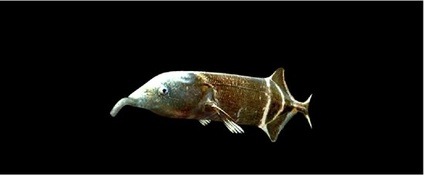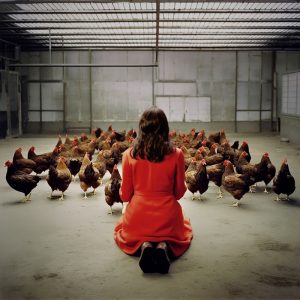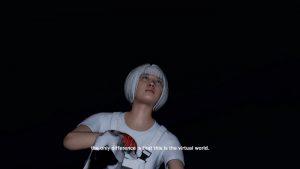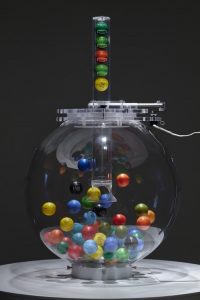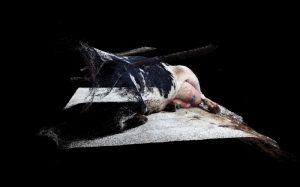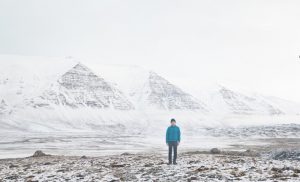This edition of the STRP festival is decidedly their best so far.
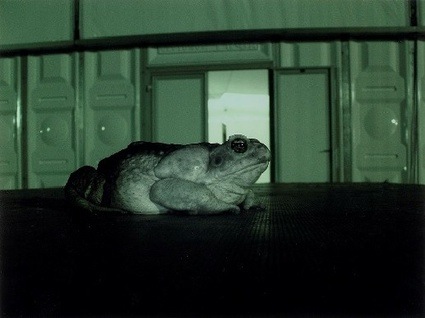 Adam Chodzko, Night Shift, 2004
Adam Chodzko, Night Shift, 2004
Yesterday afternoon, Matthew Fuller gave a brief but fascinating overview of artworks that make a direct address to the perceptual world of non-human animal species. As you will see quite a few amazing works have been done in this field.
Art for animals is art with animals intended as its key users or audience. Art for animals is not therefore art that uses animals as a substrate or a carrier, nor as an object of contemplation or use.
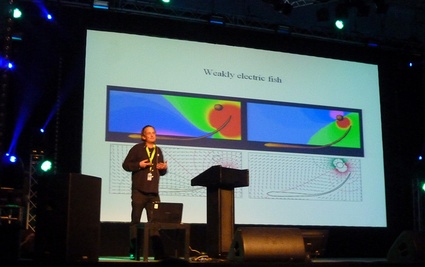
You can find online the text related to his presentation which was titled Pattern Recognition – Art for Animals so i’m just going to run through the examples he gave during the conference.
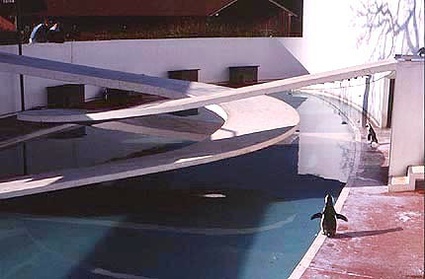 Penguin Pool, London Zoo, Regent’s Park, 1933-1934. Design: Berthold Lubetkin, Lindsay Drake, Tecton
Penguin Pool, London Zoo, Regent’s Park, 1933-1934. Design: Berthold Lubetkin, Lindsay Drake, Tecton
First one is Berthold Lubetkin‘s early modernist architecture for aquatic birds: the Penguin Pool at the London Zoo.
Hans Waanders’s series of Perches are simple branches placed by the water in the hope to attract the attention of a kingfisher and modify its habitat in an obtrusive way. Sorry i couldn’t find any illustration for this one.
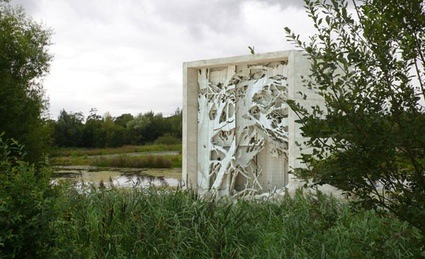 Jeremy Deller‘s international public competition to design a house for bats. The winning entry, by architecture students Jorgen Tandberg and Yo Murata from Tokyo, is built of hemcrete, an environmentally friendly mix of hemp fibre and lime. The four metres high structure features layers of computer-cut fretwork panels that allow for small, dry, dark spaces bats love.
Jeremy Deller‘s international public competition to design a house for bats. The winning entry, by architecture students Jorgen Tandberg and Yo Murata from Tokyo, is built of hemcrete, an environmentally friendly mix of hemp fibre and lime. The four metres high structure features layers of computer-cut fretwork panels that allow for small, dry, dark spaces bats love.
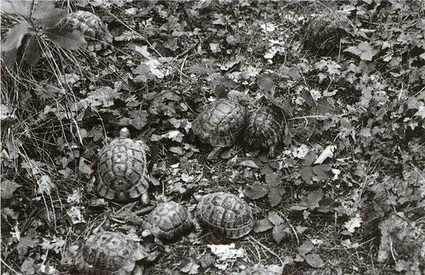 Hans Haacke, Ten Turtles Set Free, 1970
Hans Haacke, Ten Turtles Set Free, 1970
Hans Haacke bought ten turtles in a pet shop and set them free in nature, moving them from a system of property into a less mercantile environment.
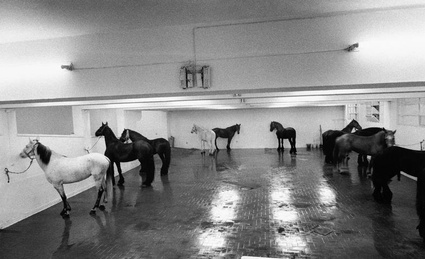 Jannis Kounellis, Untitled (12 horses), 1969
Jannis Kounellis, Untitled (12 horses), 1969
In 1969, Jannis Kounellis ‘installed’ twelve live horses for several days inside L’Attico Gallery in Rome. Untitled (12 Horses) was not only an extreme manifestation of the desire to make art that could not be sold, it also allowed art lovers to encounter animals that they knew mostly through heroic paintings and equestrian statues.
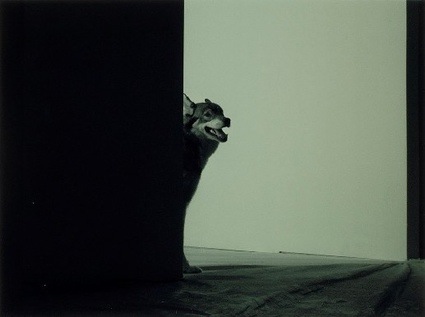 Adam Chodzko, Night Shift, 2004
Adam Chodzko, Night Shift, 2004
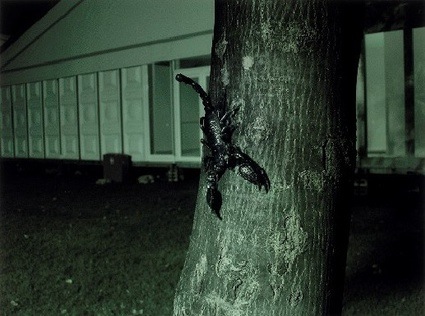 Adam Chodzko, Night Shift, 2004
Adam Chodzko, Night Shift, 2004
For Night Shift, Adam Chodzko mapped the paths of a wolf, a snake, a rat and other animals he had released overnight into the Frieze Art Fair, 2004. The piece registers the encounter of non-human species with contemporary art.
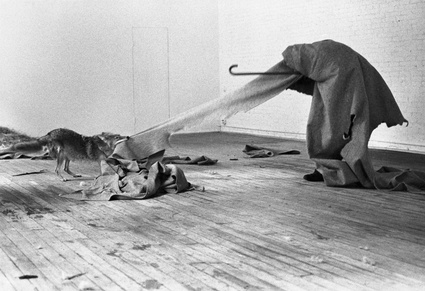 Joseph Beuys, I like America and America likes me, 1974
Joseph Beuys, I like America and America likes me, 1974
Then of course there’s Joseph Beuys’s performance I like America and America likes me which saw him share a room with a wild coyote, for eight hours over three days.
Paul Perry’s 1995 installation Predator Mark consists of a device made up of an electronic timer, a gas canister and a flask of bobcat urine. This mechanism was installed high on a tree in a wooded estate, in Breda (NL) and every few minutes would release a whiff of bobcat urine. Since bobcats are unknown to animals in Europe, the scent of urine doesn’t communicate a clear signal to animals living in that wood. It is a speculative piece of poetry based on piss.
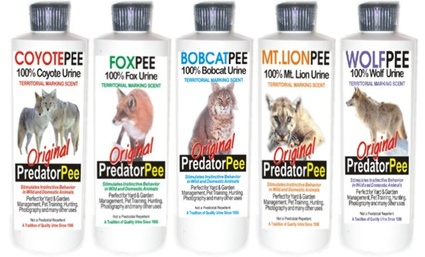
Bobcat urine is however commercially available in North America, along with that of other local predators. It is used by hunters to lure deers and other prays into a trap. The commodification of urine through the internet in particular allows its dislocation from territory. Its corollary Urine-Off, an odor and stain remover is also available on the internet and further demonstrates an animal symbiosis interwoven with capitalism.
Natalie Jeremijenko‘s OOZ (“zoo” spelled backward) series is made of various technological interfaces that aim at facilitating relationships between human and non-human species.
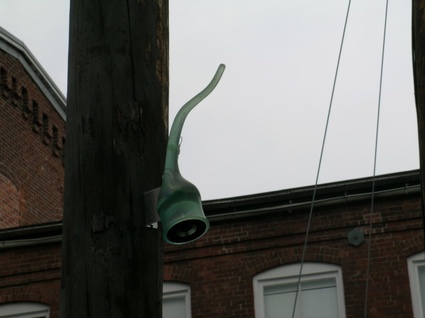
For example, the perch above is a ‘new media system’ for pigeons that amplifies their communication, attracting the attention of passersby to their message. With this perch/horn, pigeons are not vermin anymore, they become performers that try and influence humans to feed them.
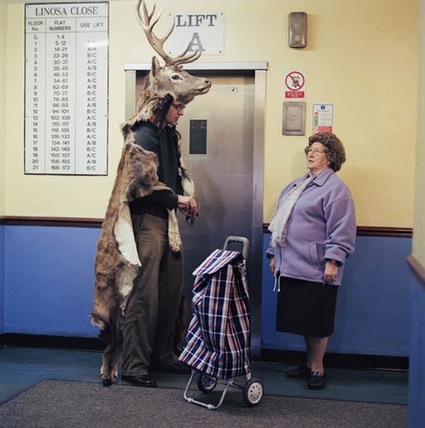 Marcus Coates, Journey to the Lower World, 2004
Marcus Coates, Journey to the Lower World, 2004
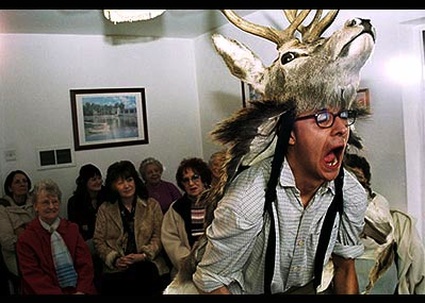 Marcus Coates, Journey to the Lower World, 2004 (still)
Marcus Coates, Journey to the Lower World, 2004 (still)
Marcus Coates has a talent for mimicking animal sounds. For Journey to the Lower World, the artist filmed himself wearing antlers and a deer skin and performing a shamanic ritual for residents of a Liverpool tower block scheduled for demolition.
In his video work Sparrow Hawk Bait (1999), Coates attached dead birds to his head, and ran through the forest in an attempt to excite the attentions of the sparrow hawk, provoking the predator in the hope of empathising with its prey.
Check out this video in which Coates explains his interest in ‘becoming animal’:
Artist and biologist Louis Bec describes himself as a Zoosystémicien. He attempts to establish bridges between technologies of information and biological manifestations of signification and intelligence. Bec has worked with various species of fish which use electrical pulses in a body of work called the Stimutalogues.
In PanGea for example, he attempted to develop a communication device allowing exchanges across the internet between two types of electric fish: the Mormyridées in Brazil and the Gymnarchidées in Africa, trying to connect two continents which are getting separated gradually with the tectonic plates.
Another artist who has been working with the electric fish is Antony Hall (whom i interviewed a while ago). His project ENKI uses the bioelectric information from an Electric Fish to trigger human Brain-wave Entrainment. It generates sound and light pulses to induce a state of relaxation similar to the way traditional relaxation systems work, but the electric communication signal comes from an electric fish rather than a chip. More information in the video below:
Fuller ended his talk with what turned out to be my favourite work of the presentation. Wilfried Hou Je Bek, author of Primate Poetics, translated the Epic of Gilgamesh for apes. He used the pictograms that researchers have developed to teach reading to chimpanzees. Available on PDF for humans too.
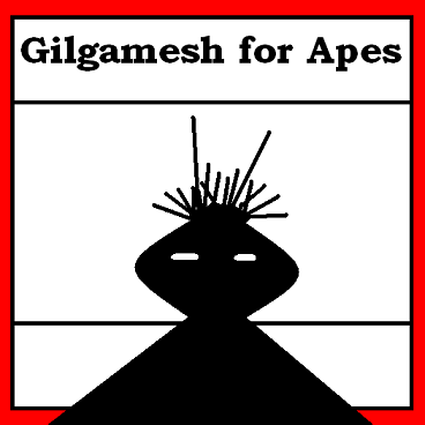 If art is genuine, it is creative regardless of who looks at it, by Lazlo Moholy-Nagy.
If art is genuine, it is creative regardless of who looks at it, by Lazlo Moholy-Nagy.
Matthew Fuller is David Gee Reader in Digital Media at the Centre for Cultural Studies, Goldsmiths College, University of London.

